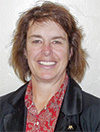For most operations, spring cattle work is as much a social gathering as it is a time of work. This may be a good year to consider splitting those events. Get the cattle work done and have a picnic with friends and family at a later date. We suggest the following:
Working crew
- Determine the minimum number of people you really need to get the work done and only invite that many people. The Centers for Disease Control and Prevention recommends gatherings of people to be no more than 10.
- Consider getting the work done with only family members or people already involved in the day-to-day operation. These people have probably already been around each other. They are basically a “closed herd.”
- If you do invite outside people, ask them where they have traveled lately. If they have been to a “hot spot,” tell them you will invite them next year or have the summer picnic at a later date.
- Review who is on the crew and determine if any of them are in “high-risk” categories. Consider getting by without their assistance this year.
- Social distancing recommends a distance of at least 6 feet. When people are moving quickly to work a calf, they are walking through other people’s air space, so if anyone is not feeling well, they should stay home.
- Be patient and allow for plenty of time to complete the job since the working crew will be smaller. Consider working cattle in smaller bunches.
Meals
- If you plan on serving a meal, make sure a wash station is available. Consider setting up a temporary one outside. A large water jug you can turn on and leave on with a bucket underneath to catch wastewater would be sufficient.
- If you are having a meal, make sure your preparer is healthy and not at risk of exposure and in a 14-day self-isolation situation.
- Consider a pre-served meal (i.e., already doled out on foil-wrapped plates) to minimize the number of people coming in close contact with food and serving utensils.
- Use good food safety recommendations and hand hygiene.
- Consider eating outside or in a room large enough that people can maintain a 6-foot space around their person.
- If the crew is in your house, sanitize frequently touched surfaces both before and after the meal.
Equipment
- Consider providing disposable gloves that crew members can throw away when they are done working.
- All hand-held equipment can be disinfected with alcohol wipes. This includes coolers, vaccine bottles, tagging pliers, implant guns, branding irons and vaccine guns. The vaccine guns can be disinfected if they avoid the needle port and seals – and of course nothing inside of the barrel but warm water and regular soap.
Spring cattle work is traditionally a time for friends and family to come together and get some work done. It has been a time of neighbors helping neighbors. The work still has to be done but, this year, the spring work needs to look a little different. We need to be responsible and do our part so we don’t risk the spread of COVID-19 to friends and neighbors. ![]()
PHOTO: For most operations, spring cattle work is as much a social gathering as it is a time of work. Photo by Mike Dixon
Katie Hoffman and Shannon Williams are both extension educators with University of Idaho. Dr. Sara Chaplin is a veterinarian for Mountain River Veterinary Hospital.








